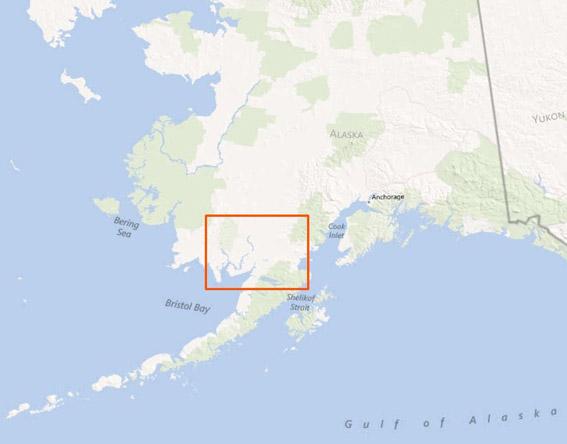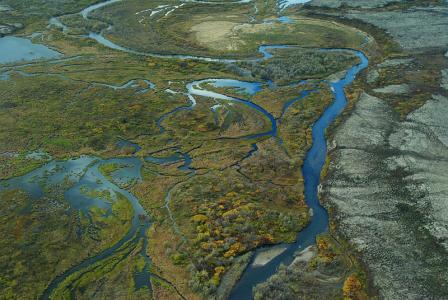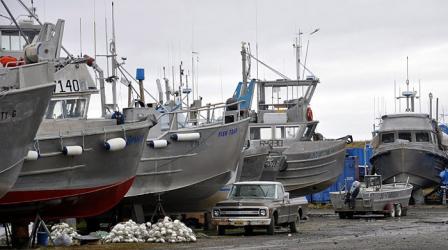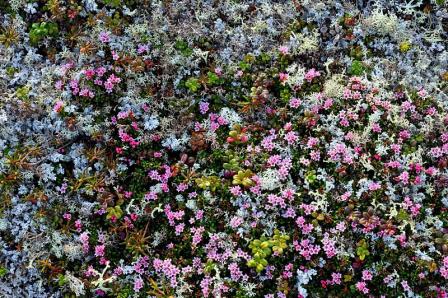About Bristol Bay
The Bristol Bay watershed in southwestern Alaska supports the largest sockeye salmon fishery in the world, is home to 25 federally recognized tribal governments, and contains large mineral resources.
The Nushagak River and Kvichak River watersheds are the largest of Bristol Bay's six major river basins and compose about 50% of the total watershed area.
Ecological resources
The Bristol Bay watershed provides habitat for numerous animal species, including 29 fishes, more than 190 birds, and more than 40 terrestrial mammals. Chief among these resources is a world-class commercial and sport fishery for Pacific salmon and other important resident fishes. The watershed supports production of all five species of Pacific salmon found in North America: sockeye, coho, Chinook, chum, and pink.
Because no hatchery fish are raised or released in the watershed, Bristol Bay's salmon populations are entirely wild. These fish are anadromous - hatching and rearing in freshwater systems, migrating to the sea to grow to adult size, and returning to freshwater systems to spawn and die.
The most abundant salmon species in the watershed is sockeye salmon. The Bristol Bay watershed supports the largest sockeye salmon fishery in the world, with approximately 46% of the average global abundance of wild sockeye salmon. Between 1990 and 2010, the annual average inshore run of sockeye salmon in Bristol Bay was approximately 37.5 million fish. Annual commercial harvest of sockeye over this same period averaged 27.5 million. Approximately half of the Bristol Bay sockeye salmon production is from the Nushagak River and Kvichak River watersheds.
Indigenous cultures
The Alaska Native cultures present in the Nushagak River and Kvichak River watersheds - the Yup'ik and Dena'ina - are two of the last intact, sustainable salmon-based cultures in the world. Salmon are integral to the entire way of life in these cultures as subsistence food and as the foundation for their language, spirituality, and social structure.
Fourteen of Bristol Bay's 25 Alaska Native villages and communities are within the Nushagak River and Kvichak River watersheds, with a total population of 4,337 in 2010.
In the Bristol Bay region, salmon constitute approximately 52% of the subsistence harvest. Subsistence from all sources (fish, moose, and other wildlife) accounts for an average of 80% of protein consumed by area residents.
These cultures have a strong connection to the landscape and its resources. In the Bristol Bay watershed, this connection has been maintained for at least the past 4,000 years and is in part due to and responsible for the continued pristine condition of the region's landscape and biological resources.
Economy of ecological resources
The Bristol Bay watershed supports several economic sectors that are wilderness-compatible and sustainable:
- commercial, sport and subsistence fishing
- sport and subsistence hunting
- non-consumptive recreation (e.g. wildlife viewing and tourism)
Considering all these sectors, the ecological resources of the Bristol Bay watershed generated nearly $480 million in direct economic expenditures and sales in 2009, and provided employment for over 14,000 full- and part-time workers.
The Bristol Bay commercial salmon fishery generates the largest component of economic activity and was valued at approximately $300 million in 2009 (first wholesale value) and provided employment for over 11,500 full- and part-time workers at the peak of the season.
Geological resources
The Nushagak River and Kvichak River watersheds contain considerable mineral resources. The potential for large-scale mining development within the region is greatest for copper deposits and, to a lesser extent, for intrusion-related gold deposits. Because these deposits are low-grade - meaning that they contain relatively small amounts of metals relative to the amount of ore - mining will be economic only if conducted over a large area, and a large amount of waste material will be produced as a result of mining and processing.
The largest known deposit and the deposit most explored to assess future mining potential is the Pebble deposit. If fully mined, the Pebble deposit could produce more than 11 billion metric tons (1 metric ton = 1,000 kg, approximately 2,200 pounds) of ore, which would make it the largest mine of its type in North America.




